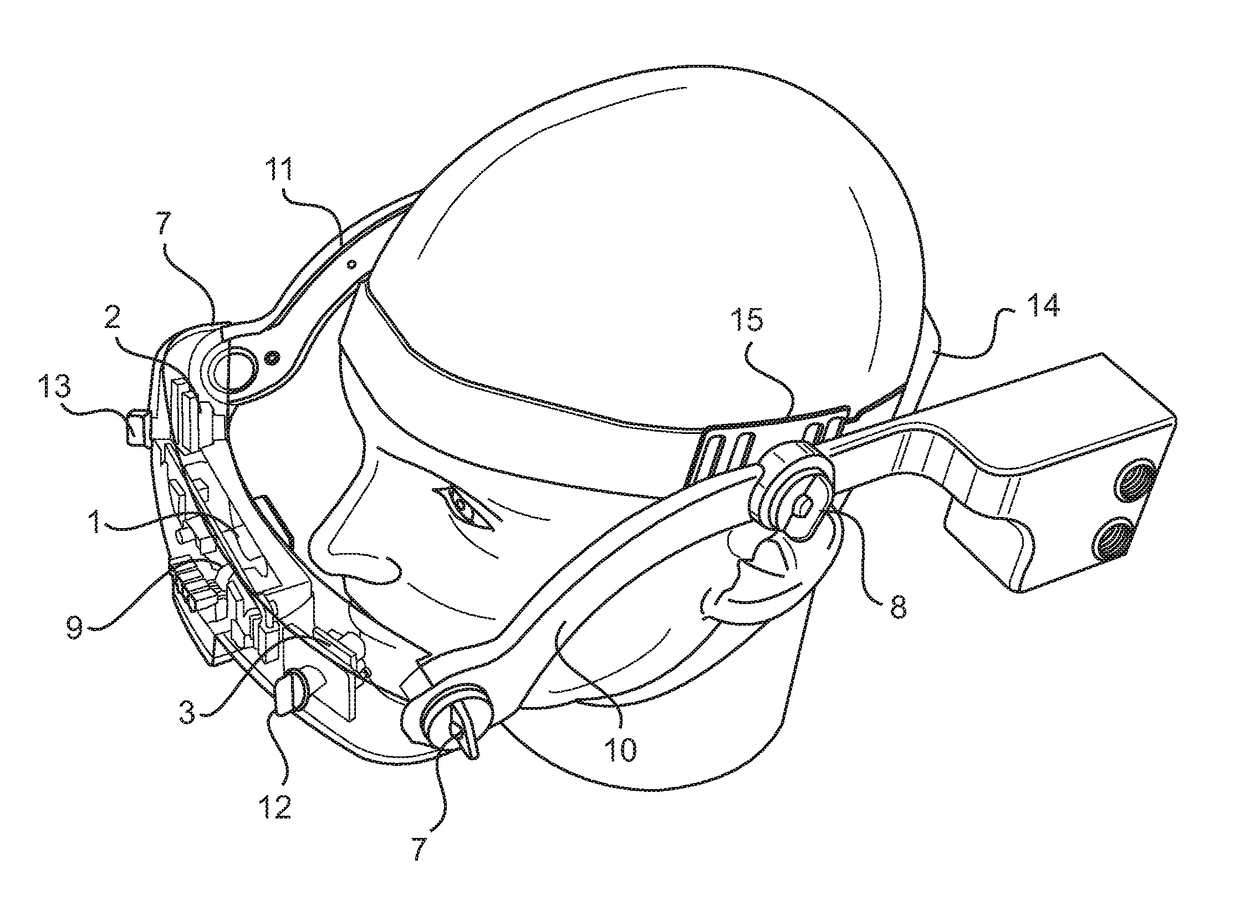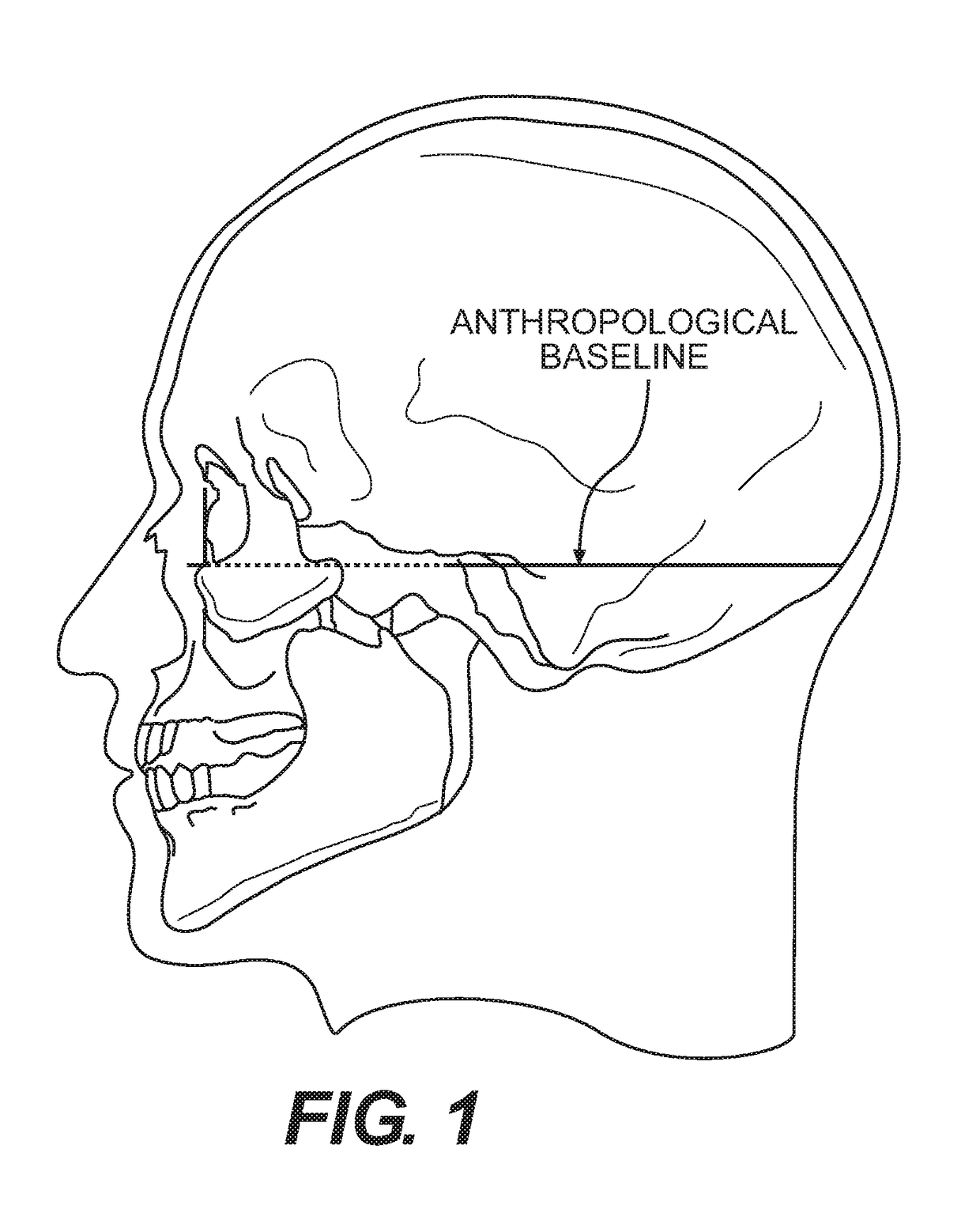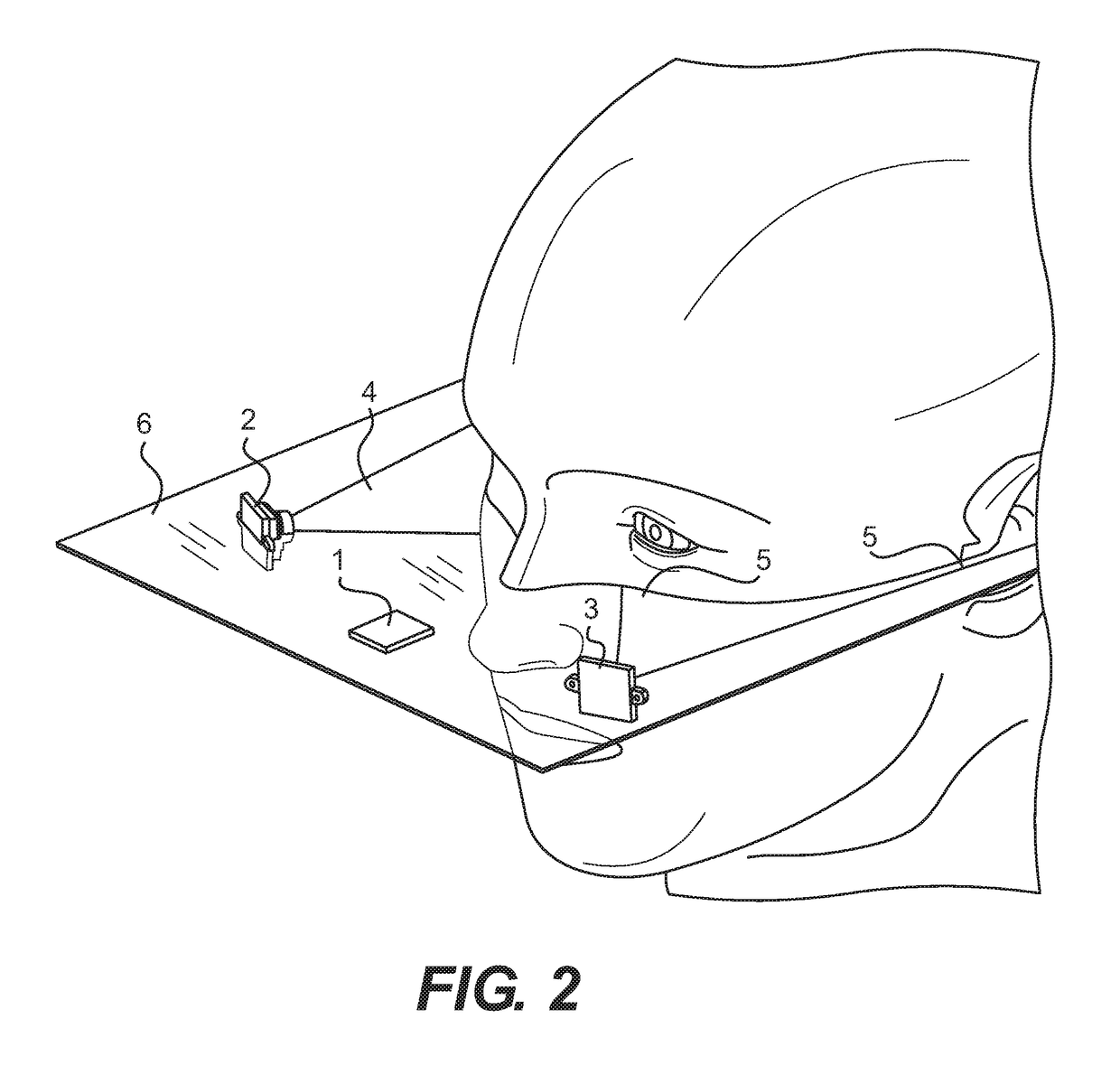Method for performing stereotactic brain surgery using 3D geometric modeling
a geometric modeling and stereotactic brain technology, applied in the field of stereotactic brain surgery using 3d geometric modeling, can solve the problems of significant errors and distortions in the subject's measurements, lack of precise definition of the neutral position of the 3d orientation of the human head, and no existing method yields sufficient accuracy in defining the neutral, etc., to achieve accurate, reliable, user-friendly and portable
- Summary
- Abstract
- Description
- Claims
- Application Information
AI Technical Summary
Benefits of technology
Problems solved by technology
Method used
Image
Examples
Embodiment Construction
[0018]As illustrated the attached Figures, the method and apparatus of the present invention are used to determine a correct neutral position of the 3d orientation of a human head. Once such correct neutral position is determined, it can be used for an unambiguous definition of the 3D orientation of the human head and for head orientation during motion.
[0019]Elements of the apparatus for determining the correct neutral position of the 3d orientation of human head are shown in FIGS. 2-3. In accordance with the preferred embodiment, the headgear unit 100 has a plastic frame 16 with two temple elements 10, 11 and a front housing 18. At least one 3D compass 1 with its electronic hardware 9 are secured within the front housing 18. The 3D compass 1 is an integrated compass module for heading computation and calibration of magnetic distortions. The module combines 3-axis magneto-resistive sensors and 3-axis micro electro-mechanical systems accelerometers, analog and digital support circuit...
PUM
 Login to View More
Login to View More Abstract
Description
Claims
Application Information
 Login to View More
Login to View More - R&D
- Intellectual Property
- Life Sciences
- Materials
- Tech Scout
- Unparalleled Data Quality
- Higher Quality Content
- 60% Fewer Hallucinations
Browse by: Latest US Patents, China's latest patents, Technical Efficacy Thesaurus, Application Domain, Technology Topic, Popular Technical Reports.
© 2025 PatSnap. All rights reserved.Legal|Privacy policy|Modern Slavery Act Transparency Statement|Sitemap|About US| Contact US: help@patsnap.com



